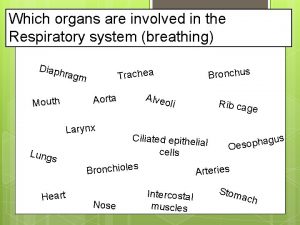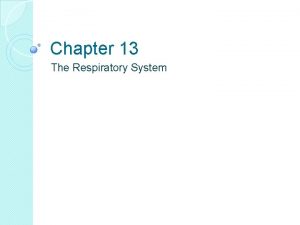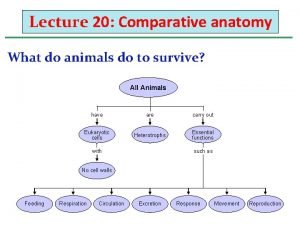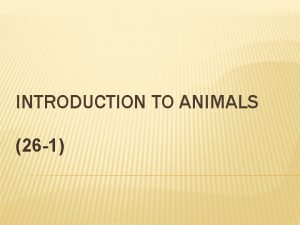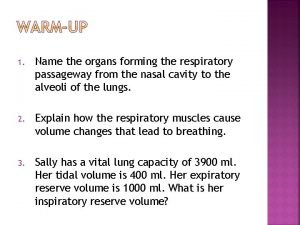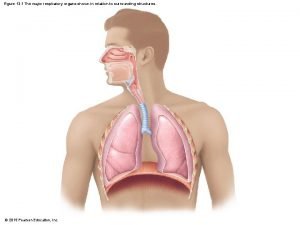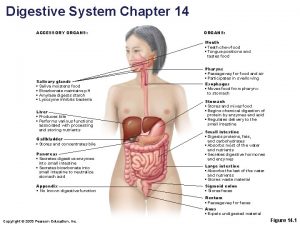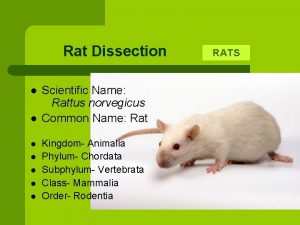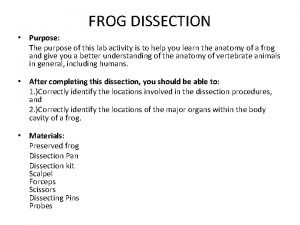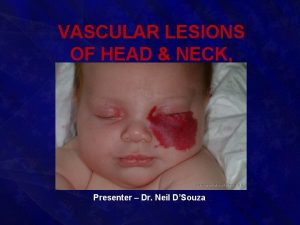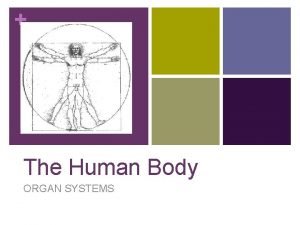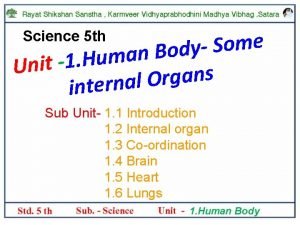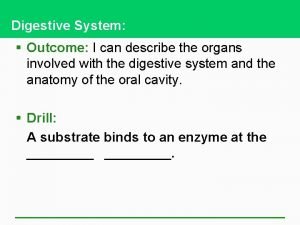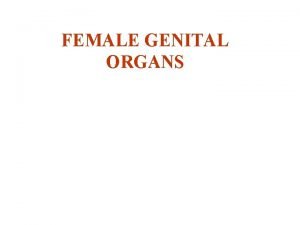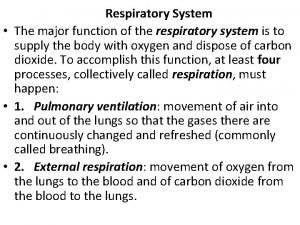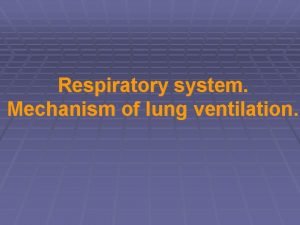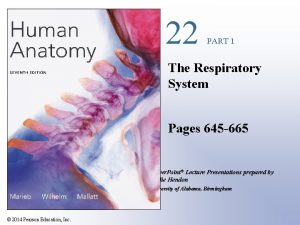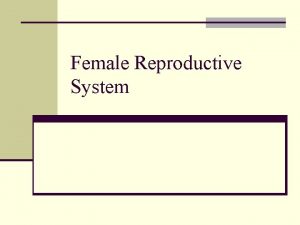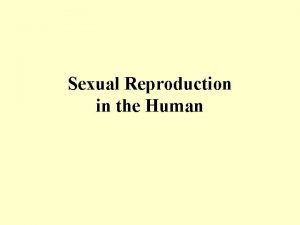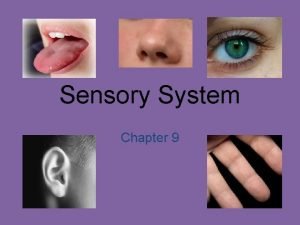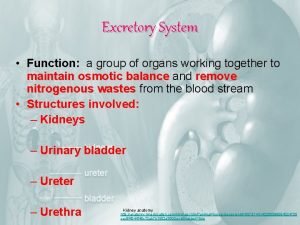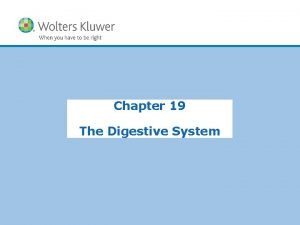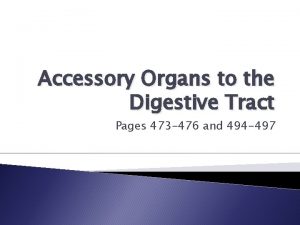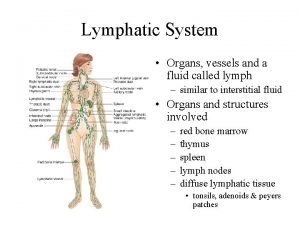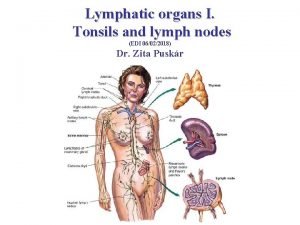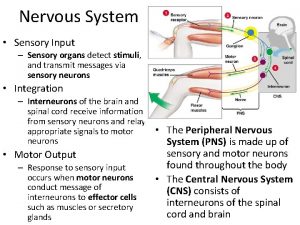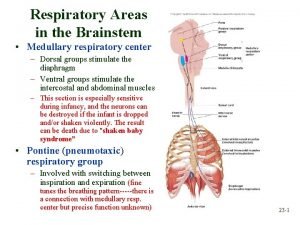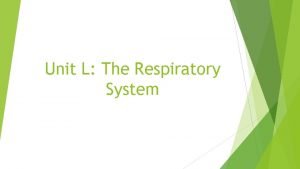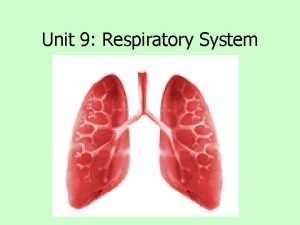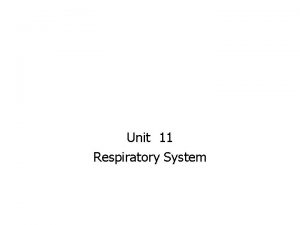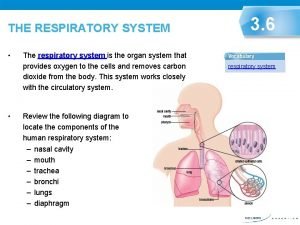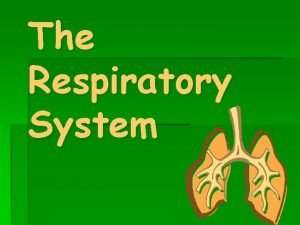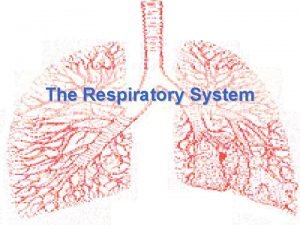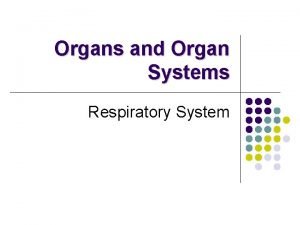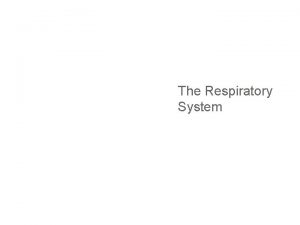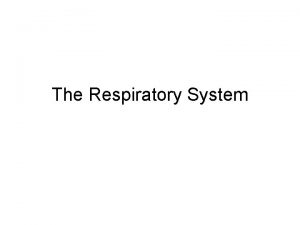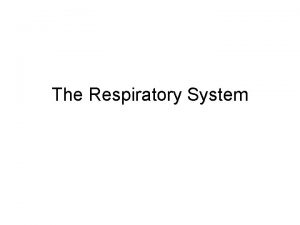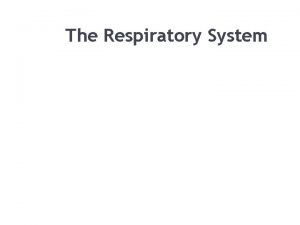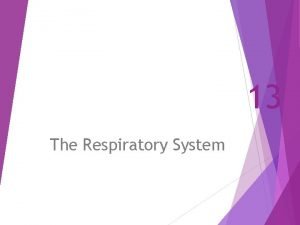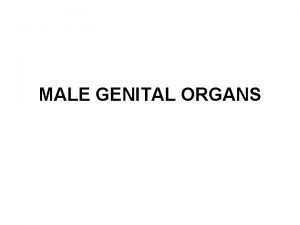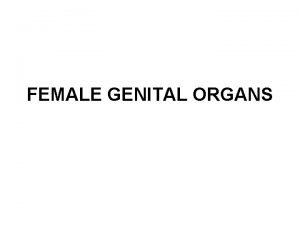Internal Organs Structure Function Heart Respiratory System Heart














































- Slides: 46

Internal Organs Structure & Function

Heart & Respiratory System

Heart: -Located in the left center of the chest, below the ribcage & sternum, between lungs. -Size of a clenched fist

Heart: A muscular organ Consists of 4 chambers: right & left atria and right & left ventricle Each chamber is separated by a valve to prevent blood from flowing the wrong way Primary Function: Circulates oxygenated blood throughout the body to the working tissues A single heartbeat consists of contraction of both atria followed by contraction of both ventricles Path of blood flow: Right side pumps blood to lungs to become oxygenated blood Left side pumps blood to the rest of the body Back from body -- into Right Atrium- into Right Ventricle - To the Lungs-- Back to the Left Atrium- To the rest of the body!


Conduction System Specialized electrical conduction system controls the contraction of the heart Called the Purkinje Fibers

Electrocardiogram P wave : atrial depolarization (contraction) QRS Complex : ventricle depolarization / contraction T wave : ventricle repolarization


Key Terms Bradycardia : fewer than 60 beats per minute Tachycardia : greater than 100 beats per minute Stroke Volume (SV): amount of blood ejected with each beat Cardiac Output : the volume of blood ejected per minute from the heart Cardiac output = SV x HR Artherosclerosis : excessive build up of cholesterol in the heart arteries, which blocks blood flow Maximal Heart Rate : 220 – (a person’s age in years)= max. heart rate

Lungs: -Located within the ribcage; 2 sides (or lobes), made of elastic tissue

Lungs: Deliver oxygenated blood to the tissues of the body through gas exchange! Oxygen to Carbon Dioxide Oxygenation of blood 2 lungs sitting in thoracic cavity Under rib cage, anterior to the heart Weigh approximately 1 kg Volume : 4 -6 Liters of air Huge surface area If spread out, lung tissues would cover half of a tennis court Highly vascularized area

Respiratory Pathway Mouth or Nose Bronchioles Alveoli Trachea Bronchi Lungs

Alveoli Lungs contain more than 300 million alveoli. Thin-walled, membranous sacs Receive largest blood supply of all organs!

Alveoli

Alveoli Millions of thin-walled capillaries (blood) and alveoli (air) lie side by side Gas diffuses across the thin barrier

Exercise increases the total lung capacity Better shape = more efficient gas exchange Max VO 2 = maximal oxygen consumption The region where oxygen consumption plateaus during exercise Measures a person’s aerobic fitness

The Lymphatic / Immune System How the Body Fights Against Disease

The Network of Channels

The System Network of channels with specialized tissues and organs Lymph organs : spleen, tonsils, & thymus Lymph nodes

The Channels The vessels are very low in pressure Connect lymph nodes and the organs About 3 Liters of lymph enter the blood stream every 24 hours

The Warriors Lymphocytes are created in red blood cells Protect the body against foreign substances Macrophages help the immune system by gobbling up foreign substances and activate the lymphocytes

Lymph Nodes Clusters of the lymphatic channels Filters lymph as it heads to the bloodstream Activates the Immune system if needed!

Lymphoid Organs Thymus : early years, secretes hormones to fight against certain diseases Tonsils : “invite” infections in to trap the bacteria

The Spleen: -Largest Lymph organ in the body -Located under the diaphragm on the left side

The Spleen: Resevoir for Red Blood Cells Regulates number of Red Blood Cells in Circulation Destroys ineffective Red Blood Cells Produces antibodies & Lymphocytes Cleans blood and is on immune system surveillance


Digestive Organs

Digestive Organs: Stomach Small Intestines Large Intestines Pancreas Liver Gallbladder

Stomach: -Found in left quadrant, between esophagus and small intestines

Stomach: Storage and mixing chamber for ingested food Some digestion & absorption occur here Gastric secretions assist in the partial digestion of proteins and alcohol & caffeine Food is mixed with secretions from stomach glands to form Chyme, which then passes into the small intestines

Small Intestines: -Found between the stomach and large intestines -3 Portions: Duodenum, Jejunum, & Ileum -20 feet in length

Small Intestines: Chyme mixes with secretions from the liver & pancreas Chyme moves through the small intestines over a period of 35 hours, propelled by peristaltic contractions Most digestion and absorption occurs in the small intestines

Large Intestines: -Connected to the small intestines -3 divisions: Cecum, Colon, & Rectum -6 ½ feet long

Large Intestines: Chyme is converted into feces through the absorption of water, secretion of mucus, & activity of microorganisms


Pancreas: -Located between small intestines & the Spleen

Pancreas: Secretes Pancreatic juice, critical in digestion of protiens, fats, & carbohydrates Produces insulin and glucagon, controls the amount of sugar & amino acids in the blood

Liver: -Largest internal organ in the body -Found in upper right quadrant, underneath the diaphragm -Weighs about 3 pounds

Liver: Consists of 2 lobes Performs digestive & excretory functions Absorbs & stores excessive glucose Processes nutrients Detoxifies harmful chemicals Secretes bile, essential in neutralizing & diluting stomach acid and digesting fat

Gallbladder: -Pear-shaped, saclike structure found underneath the liver

Gallbladder: Storage reservoir for bile secreted by the liver Secretes stored bile into the small intestines after a meal

The Urinary System

Kidneys: -Situated on either side of the spine, in center of the back

Kidneys: Primary function is to filter metabolic wastes, ions, or drugs from blood and expel them from the body via urination

Bladder: -Hollow organ, lies posteriorly to the Pubic Symphysis

Bladder: Stores Urine
 Which organs are involved in respiratory system
Which organs are involved in respiratory system Chapter 13 the respiratory system
Chapter 13 the respiratory system Conductive zone vs respiratory zone
Conductive zone vs respiratory zone Invertebrate digestive system
Invertebrate digestive system Germ layers
Germ layers Organs forming the respiratory passageway
Organs forming the respiratory passageway Parts of the upper respiratory tract
Parts of the upper respiratory tract Figure 13-1 respiratory system
Figure 13-1 respiratory system Function of the organs in the digestive system
Function of the organs in the digestive system Circularory system
Circularory system Rat dissection quiz
Rat dissection quiz Aphi sada u rat yaya
Aphi sada u rat yaya Frog dissection labeled
Frog dissection labeled Endocrine glands of rat
Endocrine glands of rat Internal organs of a fowel
Internal organs of a fowel Internal organs human body
Internal organs human body Internal organs
Internal organs Accessory digestive organs
Accessory digestive organs Function of fallopian tube
Function of fallopian tube What is the major function of the respiratory system
What is the major function of the respiratory system Conducting zone of the respiratory system function
Conducting zone of the respiratory system function Respiratory system function
Respiratory system function Respiratory zone
Respiratory zone Main function of major organs
Main function of major organs Function of reproductive organs
Function of reproductive organs Male reproductive system diagram
Male reproductive system diagram Tiny air sacs at the end of the bronchioles
Tiny air sacs at the end of the bronchioles Circulatory system and respiratory system work together
Circulatory system and respiratory system work together Sensory system organs
Sensory system organs Human excretory system function
Human excretory system function Accessory organs of the digestive system
Accessory organs of the digestive system Major and accessory organs of the digestive system
Major and accessory organs of the digestive system Lymph tissue fluid
Lymph tissue fluid Lymphatic system organs
Lymphatic system organs Stratified squamous non-keratinized epithelium
Stratified squamous non-keratinized epithelium Function of lymphatic system
Function of lymphatic system Organs of the sensory system
Organs of the sensory system Chapter 16 endocrine system
Chapter 16 endocrine system Medullary respiratory center function
Medullary respiratory center function Introduction to internal control
Introduction to internal control Importance of vouching
Importance of vouching Respiratory system bozeman
Respiratory system bozeman Unit 9 respiratory system
Unit 9 respiratory system Diagnostic test of respiratory system
Diagnostic test of respiratory system Respiratory system
Respiratory system Respiratory system coloring page
Respiratory system coloring page Respiratory system purpose
Respiratory system purpose
